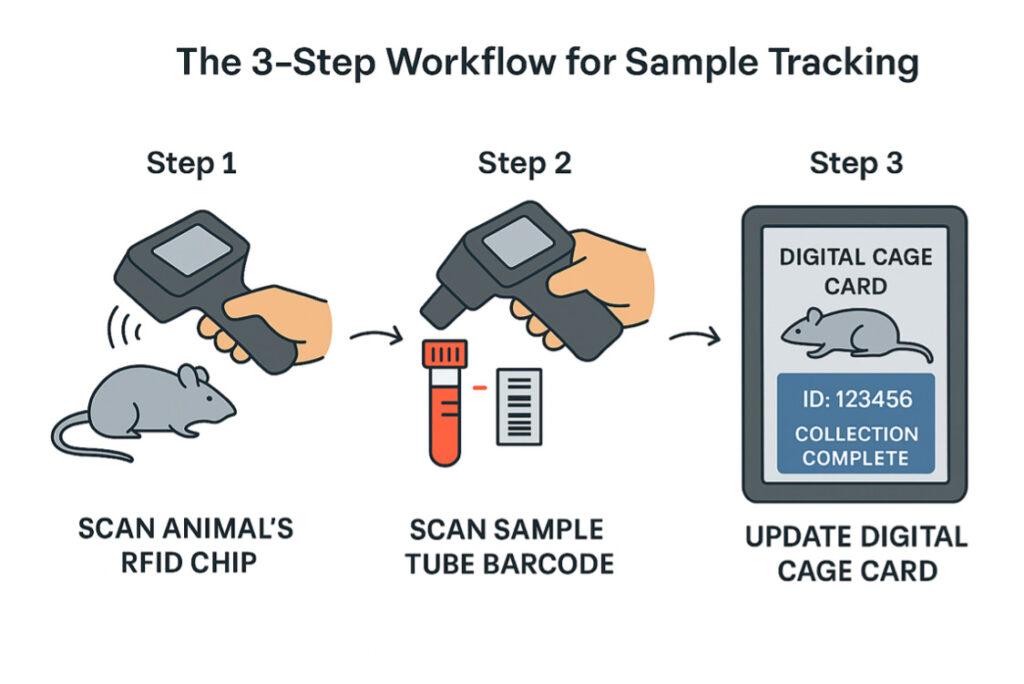Digital precision for reliable sample tracking
In laboratory animal studies, accurate sample tracking is the foundation of scientific integrity. A single mismatch between an animal ID and its sample — whether blood, plasma, urine, or tissue — can undermine weeks of work, leading to unreliable data and wasted resources.
Studies have repeatedly shown that pre-analytical errors — such as incorrect labeling, mix-ups, or incomplete logs — are among the most common causes of data loss in biomedical research.¹ ² Manual processes like handwritten labels or spreadsheet transfers amplify this risk, especially in multi-timepoint studies involving hundreds of samples from numerous animals.
Scientific literature consistently shows that automated identification technologies, such as RFID and barcode systems, significantly reduce sample-handling errors and improve reproducibility across laboratories.³ ⁴
To address these challenges, PicoTeam has developed a digital sample-tracking solution that ensures accurate identification and mapping from collection through to data analysis. This eliminates handwritten notes, spreadsheets, and the risk of sample mismatches.
How PicoTeam Streamlines Sample Tracking
PicoTeam’s digital workflow integrates seamlessly into existing laboratory procedures: minimizing human error and increasing traceability.
The 3-Step Workflow for Sample Tracking
- Scan the animal’s RFID chip, tag, or digital cage card for instant identification.
- Scan the sample tube barcode — the system automatically links it to the correct animal and timepoint, creating a secure digital match.
- The digital cage card updates automatically, marking the collection as complete and preparing the next scheduled sample.

References
- Plebani, M. (2006). Errors in clinical laboratories or errors in laboratory medicine? Clin Chem Lab Med, 44(6), 750–759.
- Lippi, G., & Guidi, G. C. (2007). Risk management in the preanalytical phase of laboratory testing. Clin Chem Lab Med, 45(6), 720–727.
- Camilleri, M. P. J., et al. (2023). Persistent animal identification leveraging non-visual markers. Machine Vision and Applications, 34(4), 68.
- Bridge, E. S., et al. (2019). An Arduino-based RFID platform for animal research. Frontiers in Ecology and Evolution, 7, 257.


